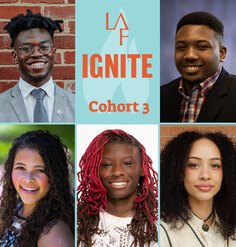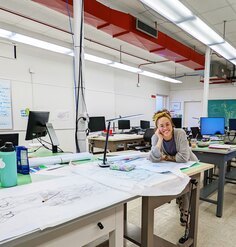Olmsted Scholar Feature: Health, Well-Being, and Design as Preventative Medicine
By Leann Andrews, 2013 National Olmsted Scholar
Today’s health issues are unprecedented in their scale and severity. Nearly half of Americans have a chronic illness, 67% are overweight or obese, and $2.3 trillion is spent on medical costs each year. Our natural resources, along with the ecosystem services they provide, are rapidly depleting, affecting local and global climates, resilience in the face of natural disasters, and air, soil, and water quality. If trends continue, today’s youth will be the first generation to have a shorter lifespan than their parents. Furthermore, with rapid urbanization and population expansion, much of the world is struggling to address basic health needs, such as access to safe water and sanitation. While these issues are daunting, they provide new opportunities for landscape architects to play a critical role in the health conversation by addressing problems “upstream” in our designed environment.
As the 2013 National Graduate Olmsted Scholar, I spent this past summer working with an informal ‘slum’ community outside of Lima, Peru to explore these potentials. I collaborated with a small group of health researchers and designers to implement my capstone project: home gardens designed to improve nutrition, increase mobility, reduce illness, improve mental health and wellbeing, and contribute to economic stability and social infrastructure in this distressed urban community.
Working closely with community leaders and local experts, our team led a series of participatory workshops to help 29 residents envision, design, construct, maintain, and sustain personalized gardens for their homes. Financial efforts focused not only on plants, but also on long-term infrastructural elements such as water-conserving wicking beds, vertical trellises for growing in tight spaces, and decorative yet functional fences to allow roaming chickens, ducks and dogs to co-exist with the gardens.
The project centered around education and skill-building among the residents to encourage sustainable practices, craft, project ownership, and community empowerment. Thanks to a continued eight-year partnership with the community, this project also links with other ongoing local efforts including fog harvesting, composting, greenspace, ecological restoration, climate change, public health, and artistic beautification.
This project will also be studied for its effect on mental wellbeing for the residents. The team collected baseline data this summer, and plans to follow-up with a 6-month and one-year evaluation, contributing to a growing body of evidence-based-health and evidence-based-design research to inform future designers, health practitioners, and decision-makers.
Additionally, this opportunity as the National Graduate Olmsted Scholar has allowed me to begin an interdisciplinary Ph.D. program at the University of Washington where I will continue to explore how design professionals can be leaders in the health conversation through implementing design as preventive medicine in our everyday landscapes. I hope to continue working on design and research projects that will expand the understanding of ‘public health and safety’ to include the full richness of health and wellbeing as landscape performance and will assert landscape architects on the leading edge of problem-solving to address the complex local and global issues of today.
Leann Andrews recently graduated from the University of Washington with a graduate degree in Landscape Architecture and Global Health and has initiated an interdisciplinary Ph.D. at the University of Washington to research the role that design can have on human and ecological health.











